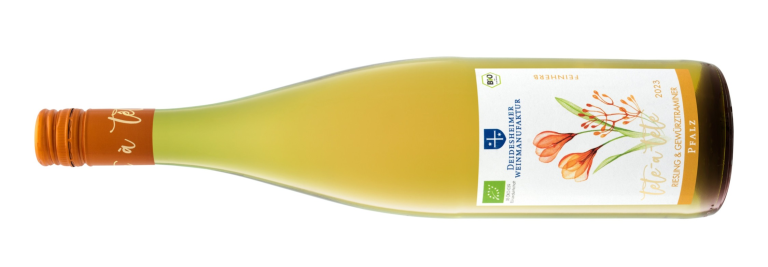Geology plus Italian-like latitude and altitudes all suggest that parts of Eastern Europe (and especially the Balkans) should be great wine producing areas.
Politics though have often got in the way.
That happened both before the fall of the Iron Curtain and (because of complications with land ownership) afterwards too.
Consequently and leaving aside the brilliant, sweet wines of Hungary, producing a wealth of top-quality wine there currently remains “work in progress”.
So, ever since the days of mass-selling Bulgarian cabernet sauvignon and of Lutomer “Riesling”, the UK’s wine related involvement with Eastern Europe has largely been with value wines.
But, the area’s interesting and inexpensive examples of indigenous grape varieties, makes that no bad thing for many consumers.
Reds tend to come from the more southerly parts.
Further north, whites are often kingpins but with distinctive styles developed to match the hearty local dishes that winter temperatures there often demand.
Here, then, is a look at widely available but especially good value options from Eastern Europe that should command the attention of a host of canny yet open-minded wine drinkers.
As ever, hyperlinks and pictures should help you find – or, indeed, buy – these wines.
Revisiting an old friend
I wrote about this guy a week or two back (when it topped its class in the People’s Choice Drinks Awards) but it is a versatile grape and was recently suggested as a partner for tikka by my wine writer colleague Sunita Sarma.
Floral and soft, 2020 Wine Atlas Feteasca Regala (£5.25 at Asda and 11.5% abv) has delightful white currant, strawberry and red apple flavours supported by good acidity and hints of baking spice.
Lightening things up a bit
Reduced alcohol (and, hence, usually texture too) is becoming more common but this version capitalises on that tendency to create delightful lunch or aperitif wine that preserves all its flavours and acidity despite its lightness.
Pale and perfumed, 2020 Hungarian Pinot Grigio (£4.50 in Lidl’s Scottish and Welsh branches but may be cheaper where minimum unit pricing does not apply and 11.5%) from Neszmely, Hungary brings us uncomplicated green apple and white peach flavours with minty freshness, lime acidity and a tangerine zestiness all wrapped in a very light and delicate texture.
Into the pink
While that Hungarian white uses pinot grigio in its more usual way, this option from Transylvania brings us pinot grigio derived rosé – and hugely successful in that endeavour it is too!
Provided you carefully avoid overchilling it, Sanziana Recas Cramele Rosé (£8.25 at Corney & Barrow and 12.5%) from Banat, Romania yields up sweet edged cherry and peach flavours with good citrus acidity, spicy elements and the sense of dryness that you get from rhubarb.
Moving on to the reds
Perhaps because it works less well with their cuisine, Romanian folk do not seem overly enthusiastic about pinot noir but conditions there suit the variety well resulting in excellent, inexpensive examples that – obviously – have neither the finesse (nor the price label!) of Burgundian versions.
With an attractively rounded savoury backdrop, Romania’s Bradshaw Pinot Noir (£5.50 at Asda and 12.5%) has juicy plum raspberry and beetroot flavours with good acidity, limited tannin and allspice, milk chocolate and floral elements.
A variation on the theme
At roughly the same price point, here is a slightly different blend from the same producer that, in this case, won the Great Outdoors category in those People’s Choice Drinks Awards (which selects wines suitable for outdoor events or parties).
Floral and quite delicate, 2019 Incanta Pinot Noir (from £5.99 at Majestic and 12.5%) centres on smooth loganberry, plum and red currant flavours that are neatly combined with sharp acidity, controlled tannin and touches of aniseed, mace and mint.
Sticking with International varieties
Although Bulgaria has dozens of designated geographic wine regions, much of the exported wine is simply shown as from the Danubian Plain (in the north) or the more southerly Thracian Lowlands.
Despite memories of Augustus Barnett (ask your grandad about them) with stacks of Bulgarian cabernet, that country’s most planted red variety these days is actually merlot.
So, here Bulgaria’s Thracian Lowlands gives us the floral 2019 Tesco Bulgarian Merlot (£4.50 at Tesco and 13%) with cherry and red plum flavours, limited tannin but firm acidity and a very light cinnamon and toffee influenced overcoat.
Moving up the price points
We are back considering local grapes again with gamza – known in Hungary as kadarka and once the mainstay of red wine sold extensively in the UK as “Bulls Blood”.
However, with careful cultivation it can make impressively weighty wines which – like this example – can be available here for surprisingly little money given the high quality on display.
Straight forward yet rich and nutty, Bulgaria’s 2019 Bononia Estate Gamza (£8.95 at The Wine Society and 13%) delivers lively loganberry and mulberry flavours with good acidity but modest tannin that all lead into a savoury, coffee, clove, tomato and slightly smoky finish.
However, the more I delve into the wines of this enormous area, the more I realise that there is so much more to say – so I will return to this theme with a few more examples early next month.
Tune in again on Monday when we look at the new supermarket promotions and discover which Top Tips are recommended for tantalising taste buds this week.
….
















4 responses
Aaah Bulls Blood. Happy days; say no more!
Spar Wild flower Romanian Pinot noir is a light, decent drop of party red wine.£6.50.Straight forward but pleasant.
You’re showing your own personal vintage now Nigel!
Agreed Paul. It is made by the same Romanian operation as the two pinots I listed and is quite similar to them. As you say, light but most of the key pinot fingerprints are there aplenty.